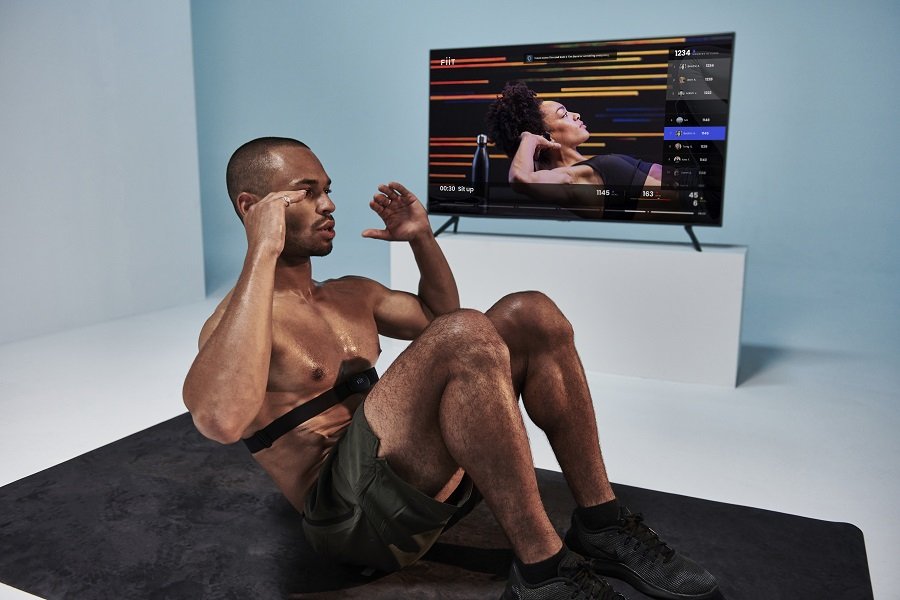Let’s get phygital
January is traditionally the time when people seek to kick-start their fitness, with a resultant upturn in membership numbers at health and fitness clubs. But will it be the same this year?
The last two years have seen significant disruption to the fitness industry, with Covid restrictions causing many to switch their activities from gyms and health clubs to outdoor exercise or home workouts utilising digital fitness channels.
Digital fitness covers a wide spectrum of activities, taking into account free activities (e.g. YouTube or Couch to 5k, which was downloaded 2.36 million times between March 2020 and July 2021), Apps with a monthly subscription (such as Fiit, Les Mills, Apple Fitness), interactive equipment that requires a high initial outlay and then monthly subscriptions (e.g. Peloton, Mirror as well as using fitness trackers such as Apple watches and Fitbit.
Pragma carried out research in 2021 on behalf of Fiit, the digital fitness app (seen abave), which showed that digital fitness is here to stay. Overall, 32% of the UK adult population had ever participated in digital fitness activities, with usage highest among those aged under 45 and among females. Unsurprisingly, usage increased while gyms and fitness studios were closed during lockdowns.
Did the upturn in usage of digital fitness result in permanent changes in behaviour?
Pragma’s research for Fiit showed that 65% of UK users of digital fitness apps planned to continue using them when venues reopened with almost half intending to use them alongside other fitness activities.
This is confirmed by findings of the Les Mills 2021 Global Fitness report which showed that 80% of gym members planned to continue to use digital workouts post-pandemic. This has resulted in a new term being coined within the industry – phygital fitness.
How have physical fitness venues been impacted?
When gyms and fitness classes reopened following lockdown restrictions, there was a degree of pent-up demand, although membership numbers did not recover to pre-pandemic levels.
The Gym Group has recently reported strong recovery in membership numbers with the total number of members increasing from 547k in Feb 2021 to 753k in October 2021. Encouragingly the company continues to expand with 15 new sites opening in the second half of 2021 and a further 25 planned in 2022.
Pure Gym also has expansion plans and recently secured £300m in private equity investment to support them.
Likewise David Lloyd reported membership numbers returning to pre-pandemic levels within four months of reopening and is also planning to expand its estate with 40 more clubs planned for the UK.
Growth within the industry isn’t limited to existing brands. Boutique Boxing brand UBX is entering the UK and is targeting 250 clubs via a master franchise agreement with Empowered Brands, the owner of énergie Fitness, while Total Fitness is launching a new concept and planning to expand from its current focus on the north of England and Wales.
Physical and digital interaction
Confirming the interaction between physical and digital fitness, Pure Gym's app has recently been named the Health and Fitness App of the Year; originally launched to help members find their closest gym and to book classes, it now also functions as an online fitness platform featuring more than 400 workouts.
Similarly, The Gym Group announced an investment in Fiit at the start of the pandemic, and gave members access. Since then it has trialled virtual classes within specialist Fiit studios and pods within a small number of its gyms. Anytime Fitness has run a combination of live and virtual classes in its gyms to give members the best possible choice of activities, while reducing the cost associated with having instructors available across all opening hours. Fitness tracking is also a key component of the interaction between the channels: even before the pandemic, all members of Orange Theory wore heart rate monitors to track their performance and to see how their statistics compared to other users.
Smaller operators are also showing a greater understanding of the need for interaction between the channels. Fives, the Five-a-side operator has unveiled its new Pinnacle Gym and announced the roll-out of its digital football concept, which includes players’ movement around the pitch being tracked and their performance data logged.
Look to the future
Digital fitness will continue to be a key component of the industry. As technology evolves, the key advantages of physical venues (such as presence of an instructor and the ability to interact with class mates) will become less relevant. However, for some, physical venues will remain important, whether this is due to a lack of space or appropriate equipment at home, or just for a change of scene.
That said, with restrictions already in place in parts of the UK, and the spectre of further restrictions hanging over more of the country, many fitness operators will once again be looking at options for maintaining their relationship with members by moving online.
Sam Fox

